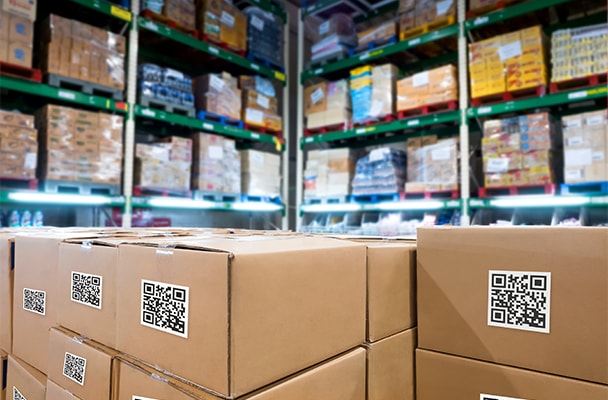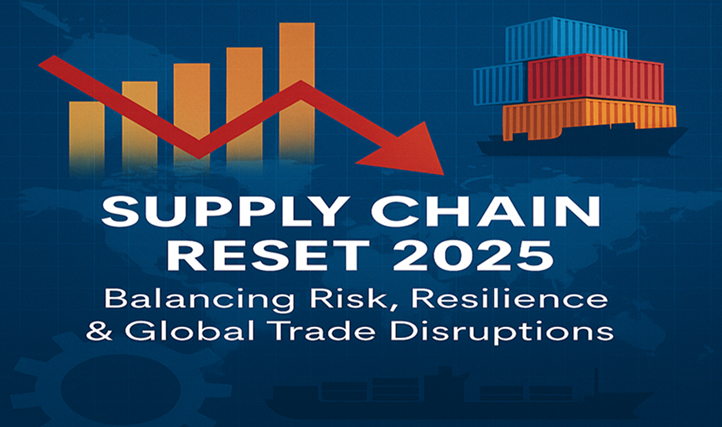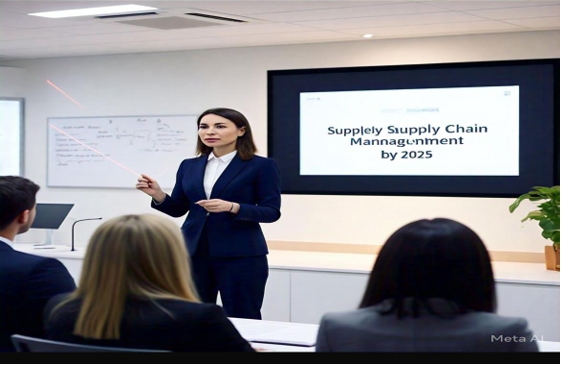May 14, 2025
Capturing the Transformation milestones in Supply Chain (Contd.)
Blog by Prof ARCHIE DSOUZA ~ Sr. Consultant Jayam SCM Consultants
Prof. Archie has been a Logistics professional since 1978.He has been into the Corporate & Academia. Besides he is a member of various Forums & Clubs and his expertise is in the areas of Supply Chain Management, Project Management, Blockchain Technology and Business Analytics . Prof Archie handles many executive development sessions for Jayam SCM on many topics.
This is the second part of a nine-part article on how Technological transformation in Logistics is helping Trading communities, Personal buyers & sellers, Governments and everyone connected with Trade, Storage, Movements and related areas.
More on the Genesis of Barcodes
Here is a 2012 clip on Joseph Hughes, the coinventor of the barcode:
See: https://drexel.edu/engineering/news-events/news/archive/2012/December/normanjosephwoodlandcoinventorofthebarcodepassesawayat91/
This is what he stated in an interview, “I just extended the dots and dashes downwards and made narrow lines and wide lines out of them.” He made use of Lee de Forest’s movie sound system from the 1920s to read the data. De Forest’s invention consisted of a printed pattern with varying degrees of transparency on the edge of the film. A light shone through it as the picture ran. This was translated by a sensitive tube on the other side using the shifts in brightness and converting them into electric waveforms. These in turn were converted to sound by loudspeakers. Using this learning Woodland planned to adapt this system by reflecting light off the wide and narrow lines that he inked on paper. He used a similar tube to interpret the results. Woodland and Drexel together filed a patent. The wide and narrow vertical lines were replaced by concentric lines, enabling the label to be scanned from either direction. They called it the bullseye code. The patent application was filed in 1949. In 1952 Woodland and Silver designed and built their bar-code reader, a device that was the size of a desk and had to be wrapped in black oilcloth to keep out ambient light. This was still a far cry from the systems that got to be used in the retail sector but was nevertheless a great start. The two got what they wanted. They had created a device that could electronically read printed material.
The computers of the day were primitive and cumbersome to operate, besides being expensive. They could only perform simple calculations and were huge in size. The idea of installing thousands of them in supermarkets across the country was just not realistic. An inexpensive and convenient way to record data had to be designed. Without this, their idea would be but a curiosity. To add to the situation there were in, was the existence of a five-hundred-watt bulb. This meant high consumption of energy and a very inefficient system. Besides this, it was enormous and ugly with the danger of causing eye damage. What they needed was a source that could focus a large amount of light into a tiny space, a laser. However, in 1952 the laser wasn’t invented. So, was, the bar code a technology whose time had not yet come? The duo though sensed the potential and were persistent. They were granted their patent in October 1952. Woodland, who was an employee with IBM was able to persuade the company to hire a consultant to evaluate bar codes. The consultant saw the potential but said they would require technology that wasn’t just non-existent but would take at least five years to come into being. By now, the patent was halfway through its life. The duo in 1962 sold the patent to Philco who, in turn, sold it to RCA. In 1971 RCA was able to jolt not just the retail sector but several industries with the barcode. By then, came several advances in information technology in freight handling many of them pioneered by the US rail industry. Freight wagons, wherever they are positioned initially become nomads. They wander all across the length and breadth of the country and often abroad as well. Where multiple railway companies exist, they may be lent to another company. Keeping track of them is therefore a challenge, possibly one of the most complex tasks the industry faces. In the early 1960s, before the ocean-going container was invented, it attracted the attention of David J. Collins, an MIT master's graduate. He immediately went to work for the Sylvania Corporation, which was trying to find military applications for a computer it had built.
At that time the railroads, as railways are called in the United States, needed a way to identify cars automatically and then to handle the information gathered. While Sylvania’s computer could do the latter, Collins needed a means to retrieve the former. The obvious approach was some sort of coded label. This seemed to be the easiest and cheapest option. The labels Collins experimented with, however, were not bar codes. They used groups of orange and blue stripes made of reflective material, which were arranged to represent the digits 0 to 9. Each car was given a four-digit number to identify the railroad that owned it and a six-digit number to identify the car itself. Readers would flash a beam of coloured light onto the codes and interpret the reflections. The first test of the system was conducted in 1961 and by 1967 a nationwide standard for a coding system was adopted. All that remained was for railroad companies to buy and install the equipment.
Collins, in the meantime, foresaw applications for automatic coding far beyond the railroads. In 1967 he pitched the idea to his bosses at Sylvania.
He suggested a “little black-and-white-line equivalent for conveyor control and for everything else that moves.” However, the company refused to fund him. So, Collins quit and cofounded Computer Identics Corporation. In the meanwhile, carriers started installing scanners in 1970, and the system worked as expected, but was still too expensive, despite the fact that computers had become a lot smaller, faster, and cheaper. They still cost too much to be economical in the quantities required. Yet, Computer Identics prospered. Its system used lasers, which in the late 1960s were just becoming affordable. A milliwatt helium-neon laser beam could easily match the job done by Woodland’s unwieldy five-hundred-watt bulb. A thin stripe moving over a bar code would be absorbed by the black stripes and reflected by the white ones, giving scanner sensors a clear on/off signal. Lasers could read bar codes anywhere from three inches to several feet away, and they could sweep back and forth like a searchlight hundreds of times a second, giving the reader many looks at a single code from many different angles. That would prove to be a great help in deciphering scratched or torn labels.
Computer Identics quietly installed its first two systems in 1969. This probably is the first true barcode system anywhere. General Motors and the General Trading Company were the two first buyers. The barcodes at that were very simple, bearing only two digits’ worth of information, which was all that was needed then. It however proved their efficacy and potential. From manufacturing settings, it moved to the grocery industry. This was the sector that provided the needed impetus to push the technology forward. By the early 1970s, the industry was able to propel itself to full commercial maturity. The technology that Woodland and Silver had invented and Computer Identics made and sold proved feasible.
RCA attended a 1966 grocery-industry meeting where bar-code development had been urged, and they took off. At one of their laboratories in Princeton, New Jersey, the Kroger grocery chain volunteered to be a guinea pig. In the mid-1970s, an industry consortium established an ad hoc committee to look into bar codes. Guidelines were set for bar-code development. They also created a symbol-selection subcommittee to help standardize the approach. Many consider this industry’s Manhattan Project. [see: https://www.energy.gov/manhattan-project] Alan Haberman who headed the subcommittee as president of First National Stores said that they showed that it could be done on a massive scale. That cooperation without antitrust implications was possible for the common good, and that business didn’t need the government to shove it in the right direction. What barcodes did was to make life easier for the cashier, not harder. To achieve this bar codes would need to be readable from almost any angle and at a distance as well. Mass production would make the labels cheap and easy to print. To be affordable, automated checkout systems would have to pay for themselves as fast as possible.
For more on the history of barcodes read” https://bar-code.com/upc/bar-code-history/ & https://www.theinventors.org/library/inventors/blbar_code.htm.
Also available is a 1970 study by McKinsey & Company. These studies have shown that the introduction of barcodes has saved the retail industry over USD 150 million a year.
Today, in the realm of logistics and supply chain management, QR codes represent a significant leap from traditional barcodes. This has heralded a new era of information exchange and accessibility. These advanced codes, coupled with the ubiquity of smartphones and tablets, have fundamentally transformed how we approach tasks such as inventory management, shipment tracking, and package sorting. Let’s look at their working and how they’ve transformed logistics.
[in our next blog - we will look at how airlines keep a track of their ULDs]

















